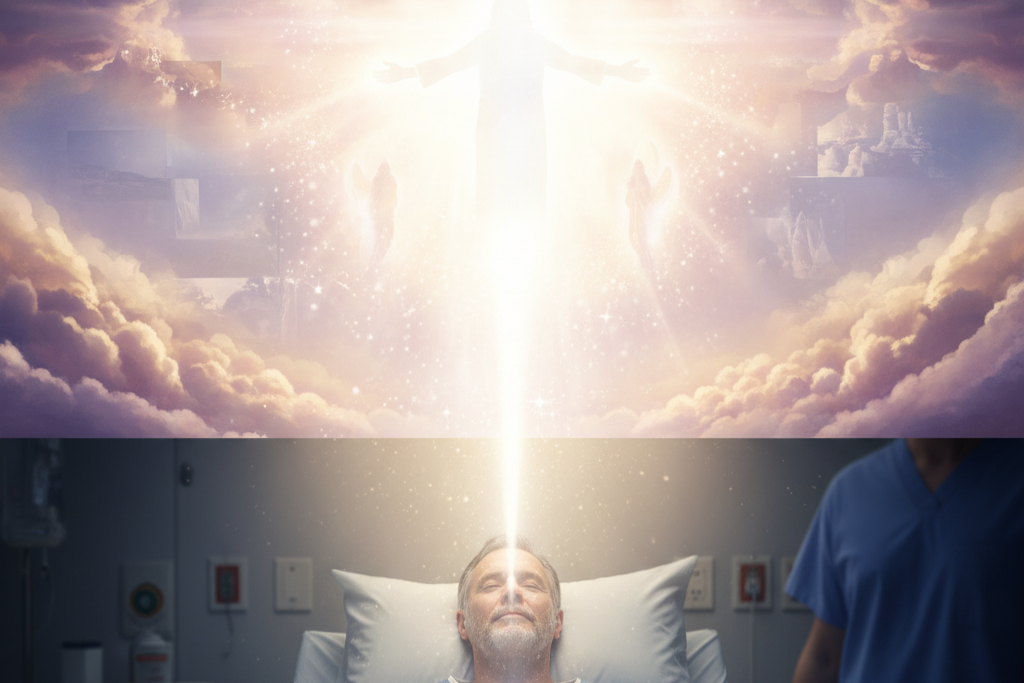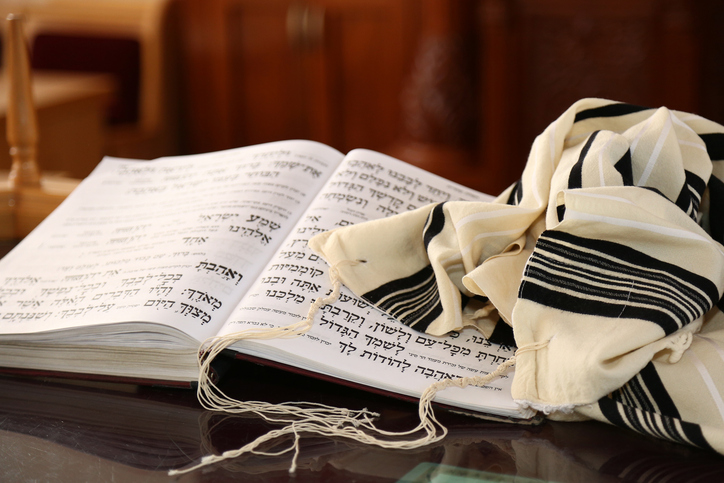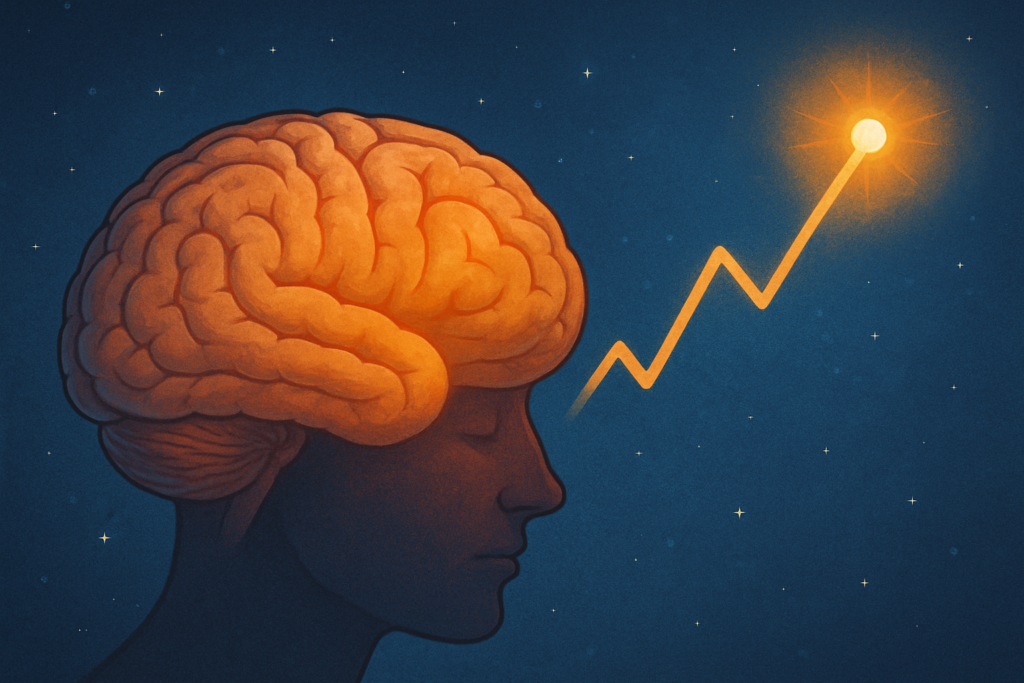The Fusion of Realism, Subconscious, and Religion

Death is one of the few experiences every human will share, yet it remains the greatest unknown. For centuries, people have searched for answers through faith, science, and the rare accounts of those who briefly crossed the line and came back. These stories and perspectives offer glimpses into the mystery, though none can provide final proof. Here are some of the most striking ways people have tried to describe or explain what might come next.
1. I Was Gone And Then I Was Back

Some people who’ve been declared clinically dead recall only a sudden “gap” in time. One man described undergoing surgery, flatlining, and then waking in recovery to his wife’s tears, with no memory of anything in between. He said it felt like the deepest sleep he’d ever had, peaceful but blank. Doctors point out that when the brain shuts down quickly, memory cannot form, which explains the missing time. Yet for those who go through it, the absence itself feels profound, like stepping outside of existence for a moment. Instead of fear, many report coming back with a calm acceptance of death, as if the silence and nothingness itself were oddly reassuring.
2. The Hills, the Wall, and the Waiting

Other near-death survivors recall vivid landscapes that feel more real than life itself. One man described standing beneath a starless black sky, with rolling hills stretching endlessly and a massive L-shaped wall in the distance. Around him, small groups of people sat silently, as if waiting for something. Among them was his late fiancée, who appeared calm and unafraid. Scientists suggest such scenes may be the brain’s response to stress and chemical surges during trauma, creating dreamlike hallucinations. Yet those who return often insist the vision carried weight and meaning, more convincing than any dream they’ve had. To them, the experience offers comfort, a sense that there may be a place beyond life where familiar faces wait.
3. The Meadow and the Snap-Back

One drowning survivor spoke of walking through a beautiful meadow, moving toward a forest that radiated peace. Just as he neared the edge, he was jolted back into his body, gasping for air as rescuers performed CPR. The sudden shift between serenity and chaos was so jarring that he questioned whether he’d brushed against another reality. Neurologists explain such experiences as the brain starved of oxygen, misfiring and generating unusually vivid imagery. But those who survive insist it cannot be dismissed so easily. They describe the scenes as sharper and more profound than ordinary dreams, as if they’d briefly stepped into another dimension before being pulled back.
4. Seeing What You Shouldn’t Be Able to See

Some accounts include startlingly specific details that raise questions science struggles to answer. A few patients have described watching their own resuscitation from above, recalling conversations among doctors or the placement of medical equipment that they could not have seen while unconscious. Skeptics argue that faint awareness during procedures, or gaps in our understanding of brain activity, may explain it. Others believe these reports suggest that consciousness might exist independently from the body. While none of the stories can be definitively proven, they add a compelling layer to the mystery, hinting that human awareness may extend farther than our instruments can currently measure.
5. The White Light

Perhaps the most recognized element of near-death experiences is the radiant white light. Survivors describe it as brilliant, warm, and magnetic, pulling them forward with a sense of overwhelming love. Scientists offer a biological explanation: as the brain loses oxygen and begins shutting down, retinal and cortical cells misfire, producing a tunnel-like effect with bright light at the center. Still, religious interpretations are just as strong, with some viewing it as a glimpse of Heaven, the presence of God, or a doorway into the next life. Whether a biological trick or a spiritual vision, the image of the light remains one of the most powerful and universal symbols of crossing from life to death.
6. Out-of-Body Perspectives

Many people who’ve had near-death experiences describe leaving their bodies entirely, floating above operating tables or accident scenes and watching events unfold. In some cases, they recall details about doctors, instruments, or room layouts with surprising accuracy. Neuroscience has shown that stimulating the temporoparietal junction in the brain can trigger out-of-body sensations, suggesting a biological basis. Still, for survivors, the clarity of what they saw feels undeniable. They often say the experience reshaped how they view life and death, convincing them that the self is more than the body. Whether explained as a brain glitch or a glimpse of something greater, the feeling of “seeing yourself from the outside” leaves a powerful impression.
7. Christianity’s View: Heaven or the Grave

Christian beliefs about what happens after death vary widely. Some traditions hold that the soul immediately departs for Heaven or Hell, based on faith and deeds. Others interpret scripture to mean that the dead enter a kind of sleep, awaiting resurrection at the end of time. The Apostle Paul’s phrase “to be absent from the body is to be present with the Lord” comforts many believers with the idea of instant reunion with God. Still, other passages describe waiting until a final judgment. Despite these differences, the unifying theme is hope, whether in eternal life with God or in the promise of resurrection to come.
8. Islam’s Account: The Barzakh

In Islam, death marks the beginning of the soul’s journey into the Barzakh, an intermediate state between this life and the afterlife. Here, the soul is aware of its destiny but not yet experiencing its final reward or punishment. For the faithful, the Barzakh is a place of peace and waiting, while for those who lived unjustly, it may bring discomfort or distress. On the Day of Judgment, souls will be resurrected and judged, determining whether they enter Paradise or Hell. This teaching offers both a reminder of accountability and a reassurance of divine justice, shaping how many Muslims live their daily lives with the awareness that this world is temporary.
9. Judaism’s Range of Beliefs

Jewish perspectives on the afterlife are diverse and shaped by centuries of tradition. Some branches emphasize Sheol, an ancient idea of a shadowy resting place where all souls go, regardless of their deeds. Others teach that righteous souls are united with God immediately, while wrongdoers face separation. More modern interpretations often place less focus on what comes after and more on living a just, moral life now. Rather than one single vision of the afterlife, Judaism encourages reflection on how present actions ripple forward. For many, this focus on righteousness in life offers comfort, regardless of what follows beyond death.
10. Hinduism: Rebirth and Karma

In Hindu philosophy, death is not an end but part of an eternal cycle. The atman, or soul, passes into another body, shaped by the karma of past actions. Good deeds may lead to rebirth in more favorable circumstances, while harmful ones may create struggles in the next life. Some NDE accounts from Hindu cultures describe being met by spiritual beings who tell the person it is “not their time” and send them back to life. The ultimate goal is moksha, freedom from the cycle of rebirth and unity with the divine. For believers, death is a doorway in an ongoing journey, with each life offering another chance to grow closer to liberation.
11. Buddhism: The Bardo

Tibetan Buddhism teaches that after death, consciousness enters the Bardo, a transitional state lasting up to 49 days. During this time, the soul may experience visions shaped by its past actions and state of mind. Peaceful visions can guide a person toward enlightenment and liberation, while fearful or chaotic visions may push the soul into rebirth in another realm, whether human, animal, or spiritual. Practitioners often prepare for this passage through meditation and ritual, aiming to recognize the illusions of the Bardo and move toward freedom. This perspective emphasizes that death is not an end, but a continuation of the journey toward awakening.
12. The Brain’s Last Burst

Recent studies of patients near death reveal that the brain can produce a sudden spike in organized electrical activity just after the heart stops. This surge may explain why near-death experiences often feel vivid, extended, and hyper-real, even though they occur in seconds. The brain, in its final moments, may create entire experiences, lights, tunnels, reunions, or life reviews, compressed into a brief burst. To scientists, this helps demystify many elements of NDEs. To those who’ve experienced it, however, the richness and intensity of those moments are convincing evidence that something deeper is happening.
What happens after death may remain the greatest mystery of all, but the many perspectives, scientific, spiritual, and personal, offer ways to think about it with curiosity rather than fear. Whether it is a peaceful nothingness, a transition into another form, or a reunion with loved ones, each viewpoint reflects humanity’s timeless effort to understand the unknown. Perhaps the question itself is part of the journey, reminding us that life’s value lies in how we live it today.
This story 12 Perspectives on What Happens When We Die, From Science, Faith, and Those Who’ve Been There was first published on Daily FETCH


